The ASUS X99-E-10G WS Motherboard Review: 10GBase-T Networking with Intel’s X550-AT2
by Ian Cutress on November 7, 2016 9:00 AM EST- Posted in
- Motherboards
- Intel
- Asus
- 10G Ethernet
- X99
- 10GBase-T
- X99-E-10G WS
- X550
- X550-AT2
CPU Performance, Short Form
For our motherboard reviews, we use our short form testing method. These tests usually focus on if a motherboard is using MultiCore Turbo (the feature used to have maximum turbo on at all times, giving a frequency advantage), or if there are slight gains to be had from tweaking the firmware. We leave the BIOS settings at default and memory at JEDEC (DDR4-2133 C15) for these tests, making it very easy to see which motherboards have MCT enabled by default.
Video Conversion – Handbrake v0.9.9: link
Handbrake is a media conversion tool that was initially designed to help DVD ISOs and Video CDs into more common video formats. For HandBrake, we take two videos (a 2h20 640x266 DVD rip and a 10min double UHD 3840x4320 animation short) and convert them to x264 format in an MP4 container. Results are given in terms of the frames per second processed, and HandBrake uses as many threads as possible.
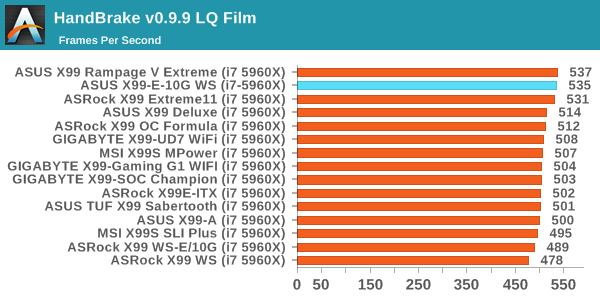
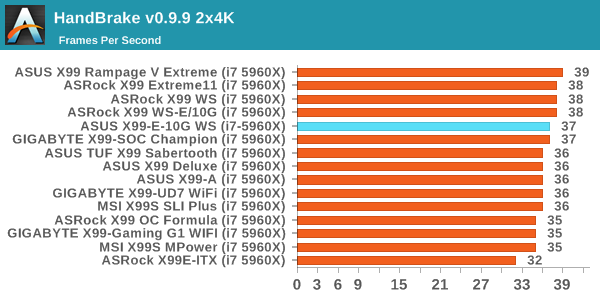
Compression – WinRAR 5.0.1: link
Our WinRAR test from 2013 is updated to the latest version of WinRAR at the start of 2014. We compress a set of 2867 files across 320 folders totaling 1.52 GB in size – 95% of these files are small typical website files, and the rest (90% of the size) are small 30 second 720p videos.
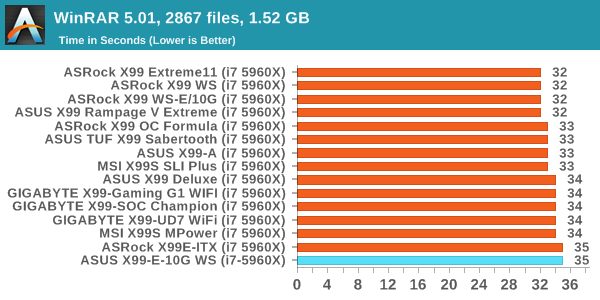
Point Calculations – 3D Movement Algorithm Test: link
3DPM is a self-penned benchmark, taking basic 3D movement algorithms used in Brownian Motion simulations and testing them for speed. High floating point performance, MHz and IPC wins in the single thread version, whereas the multithread version has to handle the threads and loves more cores. For a brief explanation of the platform agnostic coding behind this benchmark, see my forum post here.
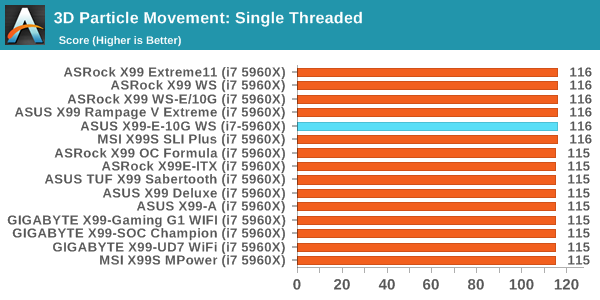

Rendering – POV-Ray 3.7: link
The Persistence of Vision Ray Tracer, or POV-Ray, is a freeware package for as the name suggests, ray tracing. It is a pure renderer, rather than modeling software, but the latest beta version contains a handy benchmark for stressing all processing threads on a platform. We have been using this test in motherboard reviews to test memory stability at various CPU speeds to good effect – if it passes the test, the IMC in the CPU is stable for a given CPU speed. As a CPU test, it runs for approximately 2-3 minutes on high end platforms.
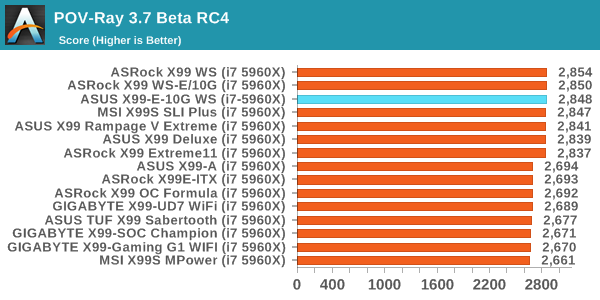
Synthetic – 7-Zip 9.2: link
As an open source compression tool, 7-Zip is a popular tool for making sets of files easier to handle and transfer. The software offers up its own benchmark, to which we report the result.
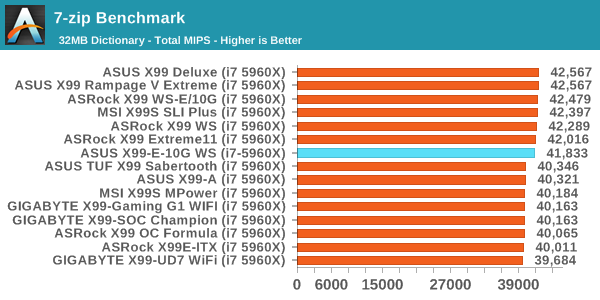










63 Comments
View All Comments
maglito - Monday, November 7, 2016 - link
faster large file copies to/from NAS.1Gbps is a real limitation here.
prisonerX - Monday, November 7, 2016 - link
Who needs a "use case"?BrokenCrayons - Wednesday, November 9, 2016 - link
Someone who has a lot of stray use laying around and needs a container in which to store them.Breit - Thursday, November 10, 2016 - link
Thanks, made my day! :DNotmyusualid - Friday, December 2, 2016 - link
Hilarious!beginner99 - Tuesday, November 8, 2016 - link
My thought as well. The average user doesn't need it that's why it's not marketed in this space. The average user is content with crappy WiFi that can't even fully use a fast internet connection. 1GBit Ethernet is usually fast enough to saturate your average hdd even for large file transfersbcronce - Tuesday, November 8, 2016 - link
40Gb network cards are becoming popular in datacenters. My use case is a simple one. My ISP is so good, they pass these 40Gb micro-busts through their network right to my connection, giving me transient latency spikes that can last tens of milliseconds before TCP's congestion control starts doing its magic.My 1Gb link can't handle 40Gb hitting it and TCP takes too long to respond. TCP takes tens of milliseconds because they're tens of milliseconds away, latency wise. This is a speed of light issue and Latency vs throughput issue.
Notmyusualid - Friday, December 2, 2016 - link
I bought the ASrock version of this board, and by day actually test / implement 10G & higher networks. So given I'm one who is building a rig for the next 3-5yrs (as the article refers too), I thought I'd jump on 10G to futureproof myself. I also have 2x1G ports on the board too, so I can disable the 10G in the meantime.zodiacfml - Monday, November 7, 2016 - link
Thunderbolt 3 has more value.It will get popular soon but price and power consumption has to go down now. The tipping point will be when enterprise Wi-Fi APs start wielding this interface.
pixelstuff - Monday, November 7, 2016 - link
Thunderbolt 3 is harder to run through your walls and put an end on wherever needed. Also not convenient for having multiple users connected at the same time.